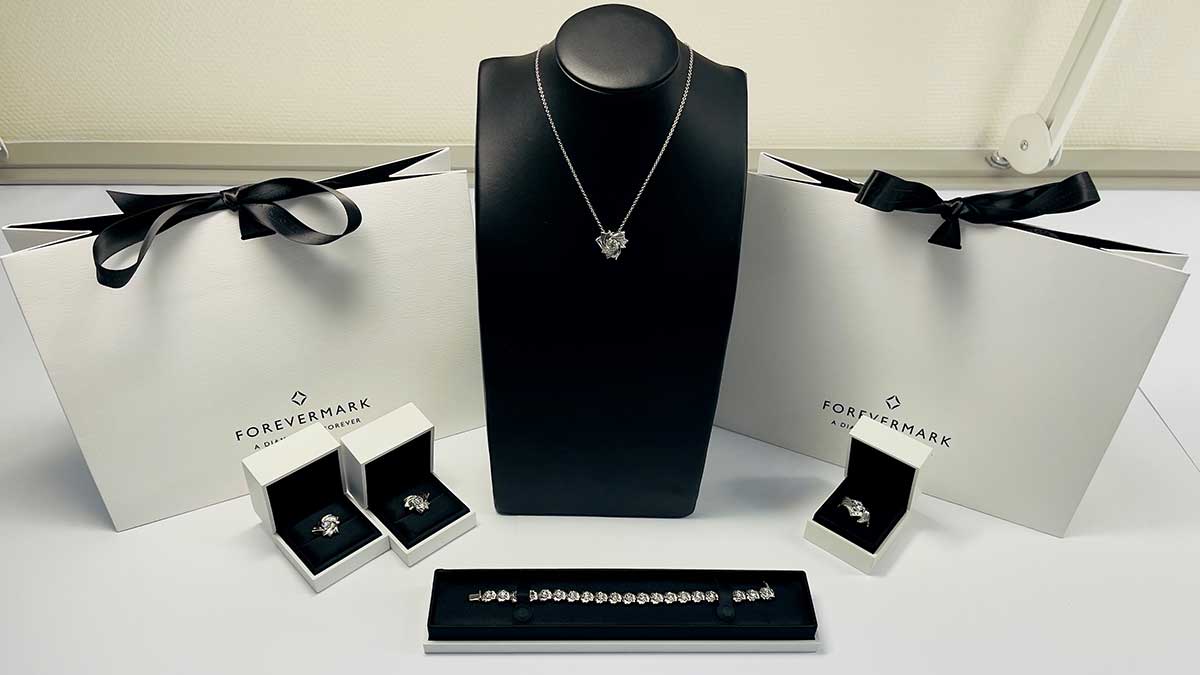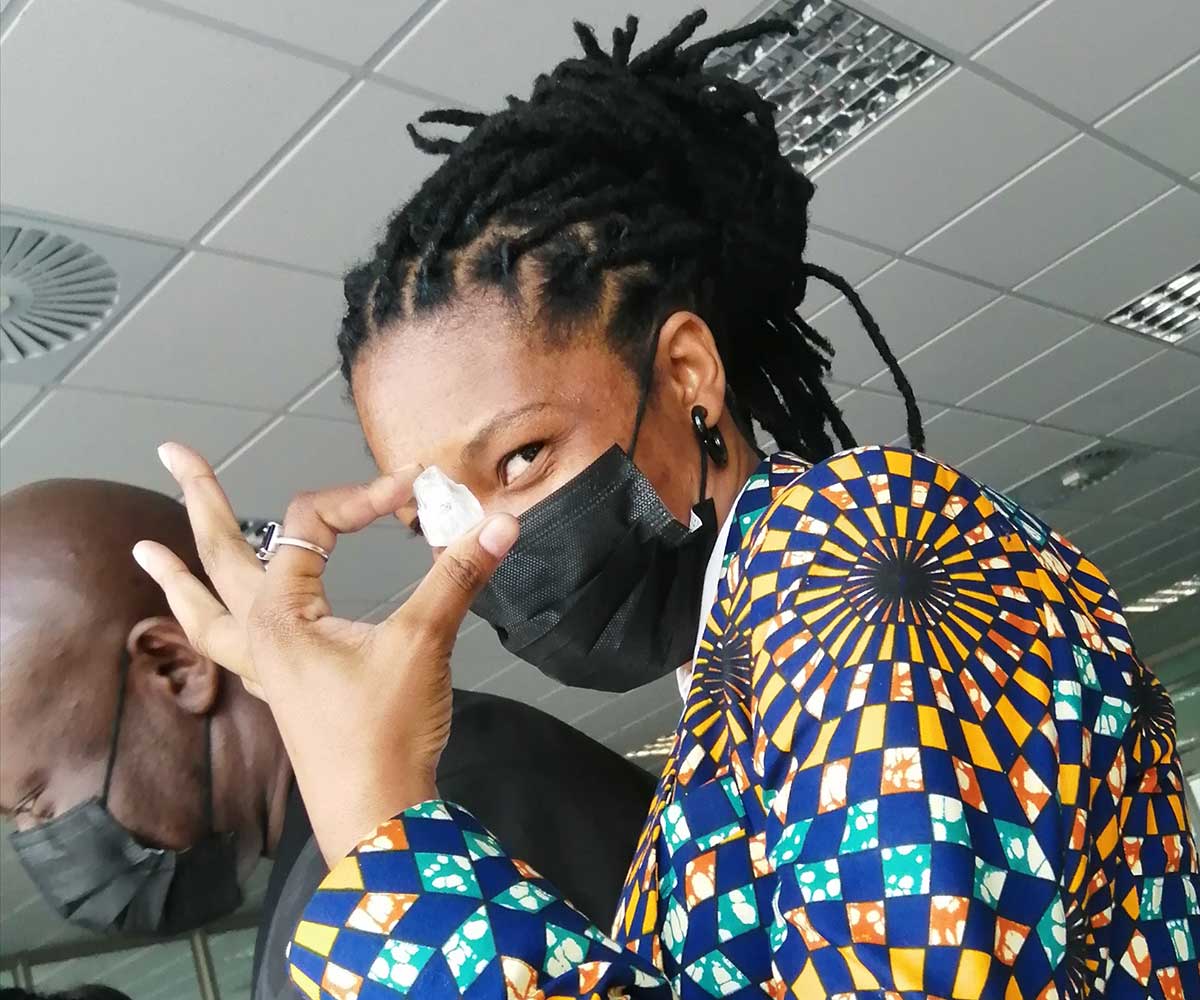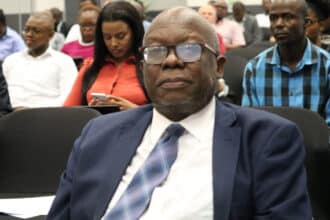Known as a shining beacon of development success in sub-Saharan Africa, Botswana’s success story is a result of the government’s prudent management of the country’s abundant mineral resources – diamonds, which are the biggest contributor to government revenue.
Although Botswana is the world’s leading producer of diamonds by value and volume, the sought-after gemstones remain a mystery to most of her people, who’ve never seen nor held the precious stones.
This week, the De Beers Global Sightholder Sales (DBGSS) invited Voice Woman and five other influencers to a familiarisation tour of their business; the Aggregation and Large Stones areas as well as a tour of KGK Diamonds, a state-of-the-art diamond cutting and polishing factory in Block 3, Gaborone.
The five other guests were: Shining Light Awards alumni, Mbako Baraedi and Khumo Makwa; industry colleague, Gosego Motsumi; diamonds experts, Olivia Landau and Kyle Simon – co-founders of The Clear Cut in New York, USA, who are also here for the Forbes 30 Under 30 Summit.
Before the tour, guests were taken through a brief history of De Beers in the country. External Communications Manager, Kesego Okie, said, “De Beers Group was established in 1880 and is a member of the Anglo American group. Previously owned by the Oppenheimer family and sold to Anglo American in 2011, because of the brand that was stamped globally, a decision was taken to retain the name, especially for Botswana. Anglo American owns 85% of De Beers Group, the world’s leading diamond company with unrivalled expertise in mining exploration, sorting, valuing, marketing and selling of diamonds. The Government of Botswana owns the remaining 15%. De Beers Group and its partners produce around one third of the world’s rough diamonds, by value.”

Elucidating the often problematic matter of distinguishing between De Beers and Debswana, Okie explained; “De Beers exploration does the exploration work, mining is done by Debswana – a 50/50 partnership between De Beers and the Government of Botswana,” hence the portmanteau word of De Beers and Botswana.
She added that the three operations at Orapa, Letlhakane and Damtshaa Mines (OLDM) are considered one operation in the Boteti area.
“Orapa is where the first deposits were discovered, the heart of diamond mining. The sister company, Jwaneng mine, is the world’s largest diamond mine by value; it consistently continues to hold top position in the value space. The sorting and valuing is done by DTCB, a joint venture, again, between De Beers and the Government of Botswana. Most people can’t differentiate between De Beers, Debswana and DTCB. We also have the marketing and selling arm of the company done by us here in the third floor. We exist to sell diamonds.”
In 2013, after almost eight decades, De Beers moved its sorting or aggregation operations from London to Gaborone; “A huge shake-up in terms of the set-up of the diamond industry globally, the move from London demonstrated Botswana’s position as a key player in the diamond industry because it came with high technology. We have 10 sights yearly where our Sightholders (clients), international investors and diamond companies come into the country to view diamonds in this sight lounge for a whole week to view and select the ones to buy. Prior to 2013, Botswana was only dealing with Botswana diamonds. We receive diamonds from all four De Beers producer countries – Botswana, Namibia, South Africa and Canada – which are further processed, sorted, valued and aggregated in Botswana by DTCB, which is also a 50/50 joint venture between the Government of Botswana and De Beers,” Okie said.
Before we proceeded to view the rough or uncut gemstones, De Beers Stakeholder Relations Specialist, Tlamelo Kebalatetse, apprised us of the De Beers Designers Initiative – the Shining Light Awards (SLA) – which have existed for 23 years in South Africa, 11 years in Botswana and Namibia respectively, and two years in Canada. Held bi-annually, the SLA unearth talent, celebrate and empower young jewellers in De Beers’ diamond producer countries.
Two of those young SLA alumni, Khumo Makwa and Mbako Baraedi, were given the opportunity to show us their exquisite, heirloom-quality designs, on display at the Sightholder lounge.

Makwa, a goldsmith, is a native of the diamond-mining town of Jwaneng, and owns 89 Carat Street, a jewellery design workshop in Selebi Phikwe.
A graduate of Keith Diamond Mastery in Johannesburg, South Africa, Makwa won the coveted award in 2019 and, as part of her prize, did a one-year Fine Jewellery Design and Manufacturing course at Akapo Jewels.
Mbako Baraedi’s 2016/17 winning designs, aptly named Li_Phant after two of Africa’s Big 5 game animals – the lion and Elephant – and in line with the theme of the year ‘Protecting Nature’s Beauty’, earned him a one-year scholarship at POLI.design, Politecnico di Milano in Italy where he studied for a Master’s in Accessory Design.
He is currently a CAD Designer at Fine Jewellery and also co-founded Dazzler Factor Jewellers.
The tour ended at KGK Diamonds in Block 3 where Assistant Manager – Business Development, Siddarth Gothi, took us around their ultra-modern diamond-cutting and polishing factory, which opened in Botswana in 2015.
Gothi says the company is headquartered in Hong Kong, with “presence across the entire spectrum of sourcing, manufacturing and distribution of diamonds and jewellery.”
Locally, as part of their effective skills transfer strategy, KGK Diamonds Botswana currently has enrolled 112 trainees in the 2022 intake, while the previous cohort of 109 trainees graduate between 2019 and 2021, of which 82 have been absorbed into the company’s various departments.





